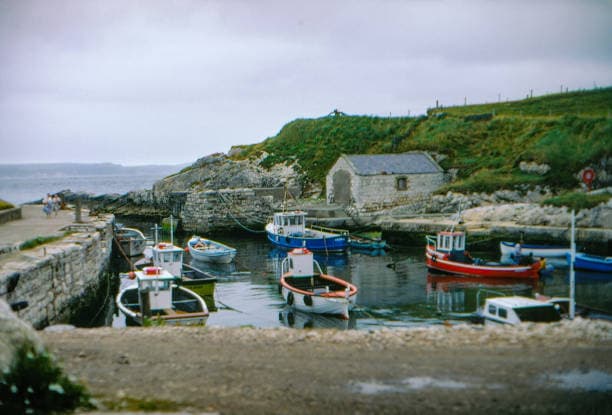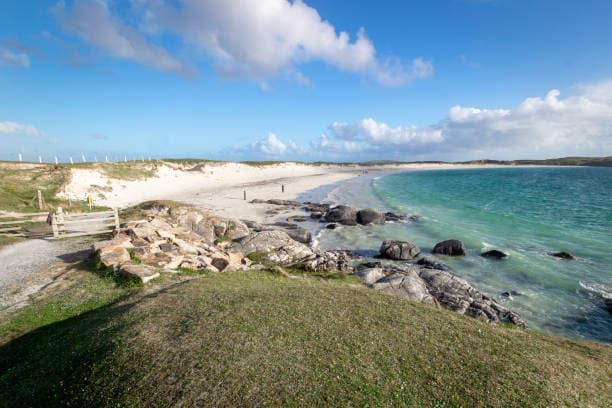Ireland, the land of ancient legends and magnificent landscapes, is known not only for its culture and history, but also for its colorful public holidays. These events not only reflect a deep national heritage, but also bring the community together, continuing the traditions of many generations. Here are Ireland’s elite five public holidays, each of which is definitely worth a visit.
St. Patrick’s Day
St. Patrick’s Day, observed annually on March 17, stands as a testament to Ireland’s rich culture and traditions. This holiday honors St. Patrick, Ireland’s patron saint, who is credited with bringing Christianity to Ireland in the 5th century. He famously used the shamrock to explain the Holy Trinity, making the three-leaf clover a lasting symbol of the day.
Beyond its religious roots, St. Patrick’s Day has evolved into a worldwide celebration of Irish culture, attracting millions from various backgrounds. The festivities are marked by green attire, shamrocks, and vibrant parades, creating a unique and lively atmosphere.
As noted
- Parades and Festivals: Dublin’s grand parade is a highlight, with street theater, music, and dance. Other cities like Cork, Limerick, and Galway also join in with their unique celebrations.
- Music and Dance: The heart of the festivities lies in traditional Irish music and dance, bringing alive the country’s cultural heritage.
- Embracing Green: The color green, symbolizing Ireland’s lush landscapes, is seen in decorations, attire, and even dyed rivers.
- Culinary Traditions: Traditional Irish dishes such as stew, colcannon, and bread mark the culinary aspect of the holiday.
Easter
Easter, a key Christian holiday, is celebrated with special solemnity in Ireland, symbolizing the resurrection of Christ and the beginning of spring. It is a time of new beginnings and deep reflection, closely intertwined with Irish religious and cultural traditions.
Key Moments of Celebration
- Church Services: Beginning in Holy Week leading up to Easter, religious rituals are emphasized, including the consecration of the Paschal water and the Easter Vigil, symbolizing the resurrection.
- Children’s Activities: Easter matinees and games, such as egg rolling, are an important part of the holiday, emphasizing the theme of new life and rebirth.
- Easter Dinner: Family dinners with traditional foods reflecting the Easter themes of rebirth and fellowship are central to the celebrations.
Bloomsday
Bloomsday, celebrated on June 16, is dedicated to Leopold Bloom from James Joyce’s Ulysses. This day is a tribute not only to the main character, but also to Joyce himself and the Irish literary tradition.
Celebration
- Literary Readings. “Ulysses” comes to life in Dublin through public readings and dramatic interpretations, immersing participants in the atmosphere of the novel.
- Walks through the Places of the Novel. Themed guided tours lead through the places where Ulysses takes place, allowing you to see Dublin through the eyes of its characters.
- Costumed Encounters. The holiday includes costume encounters where participants recreate early 20th century characters, adding color and authenticity to the holiday.
All Saints’ Day
All Saints’ Day, commonly known as Halloween, has ancient roots in the Irish holiday of Samhain, which was traditionally celebrated in late October and early November. Samhain symbolized the end of the harvest season and the beginning of winter, also considered the time when the barrier between the worlds of the living and the dead was broken, allowing the spirits of ancestors to return to earth.
With the advent of Christianity, these ancient rituals were adapted into new beliefs, evolving into the celebration of All Saints’ Day. Nevertheless, many of the traditional elements of Samhain have survived and are now part of modern Halloween, reflecting a mixture of Celtic heritage and Christian customs.

Modern Celebrations
- Pumpkin Carving: A tradition derived from the Irish legend of Jack the blacksmith now includes creating lanterns from pumpkins instead of turnips and beets.
- “Spirit Houses” and Decorations: Houses and yards are decorated with pumpkin lanterns, skeletons and witches to welcome good spirits and ward off evil spirits.
- Folk festivals and costume parades: Dressed as ghosts and witches, people participate in processions, reflecting the belief that the boundaries between worlds are blurring.
- Games and fortune-telling: Traditional amusements, such as trying to get an apple out of water with your mouth, and various fortune-telling games continue ancient customs of predicting the future.
- Folk stories and legends: Evenings devoted to ghost stories and mystical creatures connect generations, preserving historical and cultural heritage.
St. Stephen’s Day
St. Stephen’s Day, celebrated on December 26, is also known in Ireland as Wren Day. This holiday has deep roots in Irish culture and history, being one of the oldest festivals associated with winter celebrations and the Christmas season. According to legend, on this day St. Stephen was betrayed and captured because of the sounds made by a flock of sparrows. The tradition of “sparrow hunting” symbolized the pursuit and capture of these birds, although there is no actual sparrow hunting in the modern celebration.
As noted
Traditional Sparrow Hunts
On this day, groups of musicians and dancers dressed in costumes decorated with feathers and other paraphernalia go from house to house performing traditional songs and dances. These groups, called “sparrow bands” (Wren Boys), symbolize a flock of sparrows and bring joy and music to every home.
Fundraising for Charity
“Sparrow Hunts” also serve an important social function – raising funds for charity. Musicians and dancers collect donations from the households they visit, thereby supporting local community and charitable organizations.
Family Get-togethers
After the fun and activity of the streets, many Irish people spend time with their families enjoying leftovers from Christmas dinner. It’s a time for family conversations, games and watching Christmas movies, continuing the holiday festivities and enjoying the company of loved ones.
